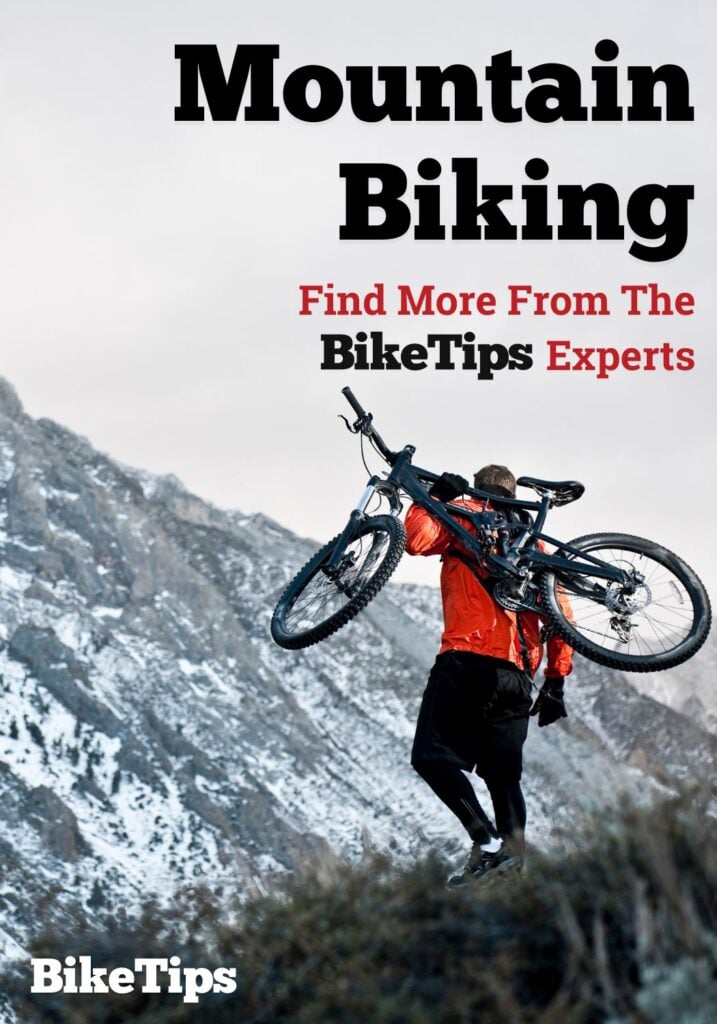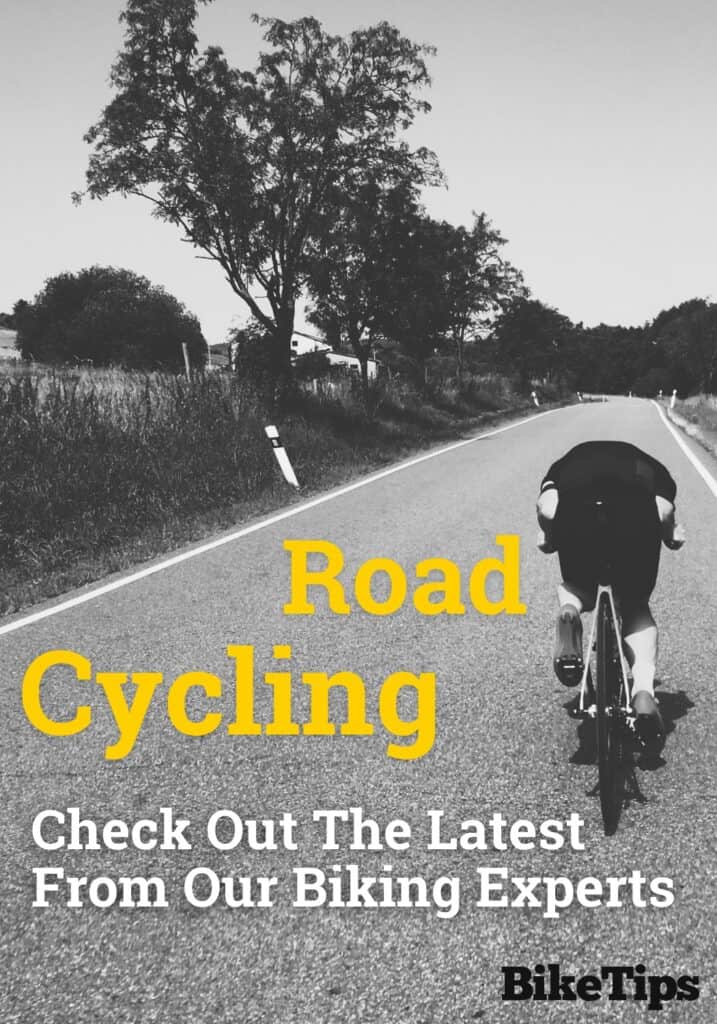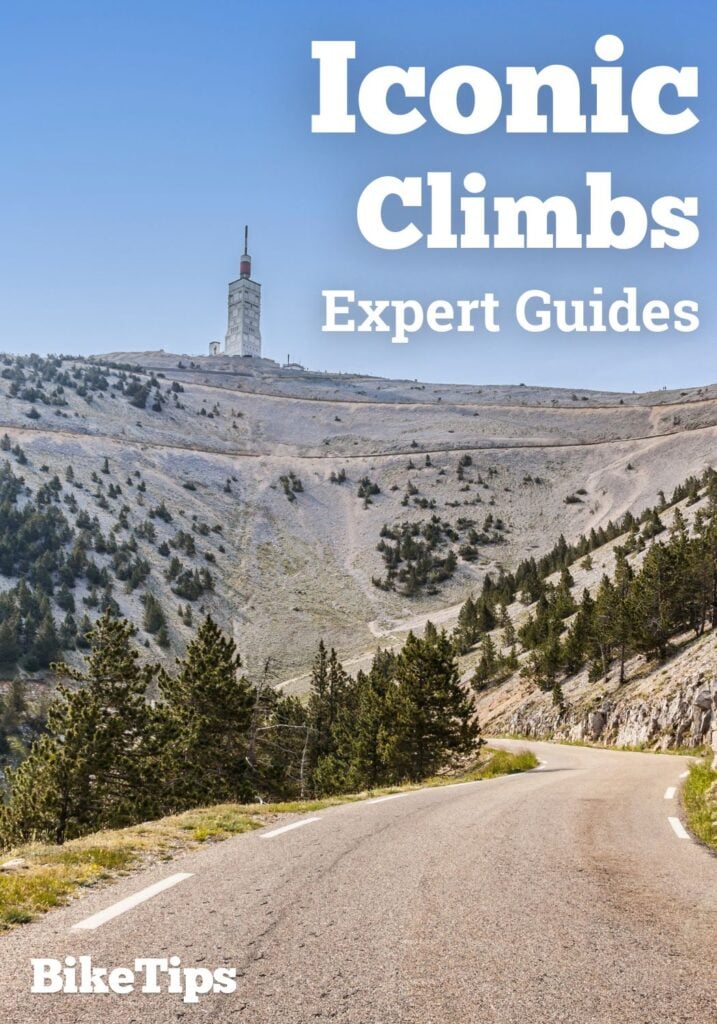One of the most satisfying aspects of cycling is being able to equip and customize your bike for the riding that you are doing. A route many cyclists take is swapping out their tires for more performance or puncture-proof options, but tire clearance can be an issue.
Tire clearance on a bike refers to the gap between the tire and the bike’s frame, fork, or brakes. It determines the maximum tire width that the bike’s wheels can be fitted with without risking the tire rubbing against the frame.
Proper tire clearance ensures smooth operation, prevents damage to the frame or tire, and allows for the use of wider tires for improved traction, comfort, and stability on different terrain.
Most manufacturers recommend leaving around 3 mm of tire clearance at a minimum – but in this article I’ll explain why in my experience, I’ve found that it’s sensible to allow slightly more than that depending on the type of riding you plan on doing and the style of your bike.
As a professional bike mechanic and ultra-endurance racer, I’ve had more than my fair share of experience navigating tire widths and tire clearances on my bikes and those of my clients – as well as the chance to see firsthand the risks of taking too many chances with tire clearance.
In this guide, I’ll be walking you through:
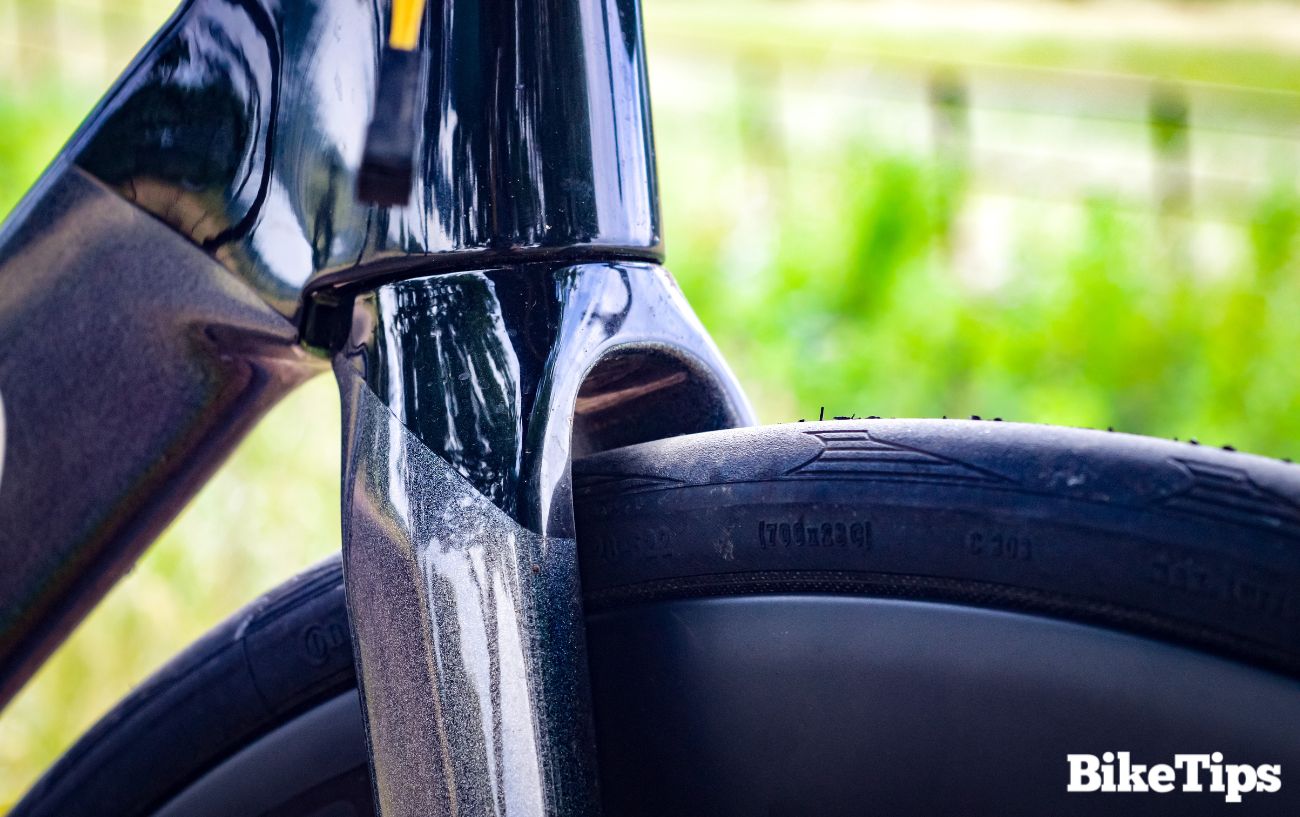
What Is Tire Clearance On A Bike?
Tire clearance is the space between the frame and the tire itself. Most cyclists think that because the tire sits into the frame, it will work when that is definitely not always the case.
Most bike manufacturers will specify the size of the tires that will fit into your bike, and depending on the type of bike, it can vary widely.
Here are some rough examples of what you will typically find to be the widest compatible tire width depending on the type of bike you might be using.
- Road Bike: 28c (wider on some modern road bikes)
- Gravel Bike: 42c (700c) or 50c (650b)
- Mountain Bike: 2.3” (29er) or 2.6” (27.5” wheel)
These are just rough estimates, as you will find they can change depending on the bike manufacturer and even the rim width you are using.
The 5 Main Tire Clearance Contact Points To Check
When checking out your tire and wheel clearance, it’s important to understand where to look in case you have an issue. Here’s where you need to be looking:
1. Chain Stays

The first place which is good to check out is the chain stays. These are located at the bottom of the frame extending from the bottom bracket toward the rear wheel.
This is the most common place you will find issues using larger tires, as they generally have the tightest angle.
2. Seat Stays

Next, we have the seat stays. This is the tubing above the chainstays and, on rim brake bikes, it typically has a small bridge that will hold the brake in place.
3. Forks

Next, we have the forks. These sit on the front of the bike and let you steer.
If you find the tire very close to the fork tubes, then it can wear them away and cause them to weaken, which is potentially very dangerous.
4. Brakes

Not generally a problem if you have disc brakes, but if you have rim brakes, it can be.
If the tire is too tall, then you will find it rubbing on the brake caliper. Not only will it stop the brakes from working properly, but it will constantly rub and slow you down.
5. Seat Tube
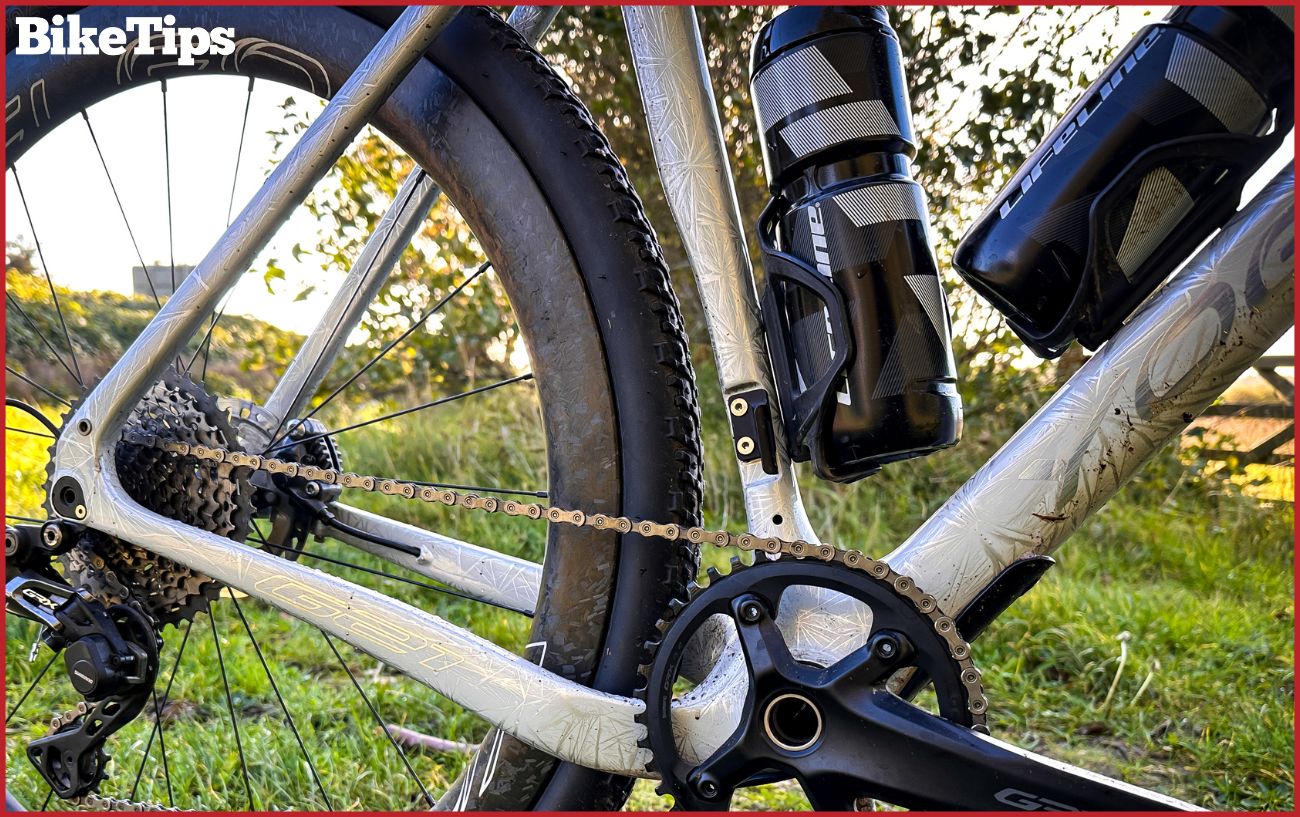
The seat tube area can be a particular problem on bikes with a shorter wheelbase.
Some modern bikes designed to be compatible with wider tires will feature a cutaway section in the seat tube to increase tire clearance (as mine does in the photo above), but on older bikes especially this can be an issue.
The front derailleur hanger can also decrease the available clearance if it sticks out from the seat tube. If this is the problem, you may be able to replace the hanger with a thinner one, though this will only buy you a millimeter or two at best.
How Do You Work Out The Widest Tires Your Bike Can Fit?
When it comes to finding out the clearance of your bike frame, the easiest way is to check the manufacturer’s guidelines. They are the ones who designed the bike and understand the tolerances better than anyone else.
For example, this Lynskey frame clearly states on the website that you have a max size of 45c on a 700c wheel, or 2.1” on a 650b wheel.
If you can’t find out those details, then unfortunately it can be a matter of trial and error.
If you already have a tire fitted, then find out its width from the markings on the sidewall, and make a safe estimate based on the current tire clearance at all the points discussed above to find your starting point.
I’d suggest doing this step at a bike shop, rather than ordering multiple tire sizes online. Most good shops will be happy to let you try a couple to see what will fit.
5 Key Points To Bear In Mind With Tire Width and Clearance
1. Wider Tires Also Make The Tire Taller
Perhaps this one goes without saying, but wider tires will not only protrude further to the sides, they’ll also extend the distance from the wheel’s rim to the top of the tire.
Tire clearance on the chain stays and seat stays is affected by the tire’s lateral width, whereas tire clearance at the brakes and seat tube are affected by the tire’s vertical height.
2. Rim Width Affects Tire Width
Generally, greater internal rim widths will make the same tire slightly wider and taller when inflated.
For example, if you want to put 28c tires on a wheel with a 23 mm internal rim width, but the tire clearance is marginally too small, switching to a wheel with a 19 mm internal rim width might reduce the tire’s real width just enough to make it work.
This also means that if you’re trying out a few different tire widths to see what you can fit in your frame, you should make sure you’re trying them all on the same wheels for consistency (and that they’re the ones you plan to use with the frame).
3. Tire Clearance May Be Reduced With A Rider On The Bike
When the added weight of a rider is added to the equation, the tire will deform slightly against the ground.
This reduces the tire’s overall volume and increases the effective pressure in the tire, which in turn reduces the available tire clearance.
4. Tire Pressure And Rider Weight Affect Tire Clearance
By extension, this effect is exaggerated or reduced depending on the rider’s weight and the pressure the tire is inflated to.
A heavier rider or a lower tire pressure will increase the change in tire clearance when the rider gets on the bike. A lighter rider or higher tire pressure will decrease this effect.
5. Not All Manufacturers Size Their Tires The Same!
Despite industry standards intended to make tire widths universal, tires from different manufacturers will often come out at slightly different widths, affecting tire clearance.
In general, Continental and Schwalbe tires have a reputation for fitting slightly wider than their labeled size, while Vittoria tires tend to fit truer to size.
How Much Tire Clearance Do You Need On A Bike?
Most manufacturers recommend around 3 mm of tire clearance at a minimum. However, from my experience working as a bike mechanic, I’d suggest being a little more cautious, depending on the type of bike you’re riding.
Just because you can fit the wheel in the frame with a particular set of tires on and it will just about spin freely, that doesn’t necessarily mean you have enough tire clearance.
For starters, the factors above might mean that the tire clearance shrinks further once you’re on the bike. A tiny tire clearance could also mean that any debris picked up by the tire wears on your frame or components.
If the tire does begin to rub, it will slow you down and potentially cause serious damage to your frame and your tires over time as paint and then frame material is worn away.
| Type of Bike | Minimum Tire Clearance |
|---|---|
| Road Bike | 3 mm |
| Gravel Bike | 4 mm |
| Mountain Bike | 5 mm |
Although many manufacturers recommend 3 mm on any tire, I have found that the bigger the tire, the more flexibility you will find. This means on hard cornering, it still has room to move and contact the bike.
Pro Mechanic’s Top Tip
If you are concerned your tire clearance could be too small, a way to test your setup is to put some insulation tape on the potential contact points.
Go for a short ride with some tight corners, and then check the insulation tape to see if it has scored the tape.
And even once you’re satisfied with your setup, keep listening out for rubbing sounds when you ride, as tires can stretch and flex a little over time.
